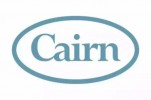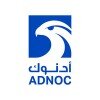Filter interviews by
Petrofac Senior Piping Stress Engineer Interview Questions, Process, and Tips
Petrofac Senior Piping Stress Engineer Interview Experiences
1 interview found
I applied via Recruitment Consultant and was interviewed before Feb 2020. There was 1 interview round.
Interview Questionnaire
10 Questions
- Q1. How to prepare stress critical line list.?
- Ans.
Stress critical line list is prepared by identifying lines that are critical for the safe operation of the plant.
Identify lines that carry hazardous fluids or operate at high temperatures/pressures
Determine the consequences of failure for each line
Consider the location of the line and its accessibility for maintenance
Prioritize the lines based on their criticality and assign appropriate stress limits
Update the list reg...
- Q2. Flange leakage method?
- Ans.
Flange leakage can be detected by visual inspection, pressure testing, or using ultrasonic or acoustic emission techniques.
Visual inspection involves checking for signs of leakage such as stains or discoloration around the flange.
Pressure testing involves pressurizing the system and checking for any drop in pressure over time.
Ultrasonic or acoustic emission techniques involve using sensors to detect any sound or vibrat...
- Q3. GRP supporting?
- Q4. What are the piping stress engineer throughout the project
- Ans.
Piping stress engineers ensure that piping systems are designed and installed correctly to prevent failure and ensure safety.
Perform stress analysis on piping systems to ensure they can withstand expected loads and pressures
Collaborate with other engineers and designers to ensure piping systems are properly integrated into overall project design
Review and approve piping specifications and drawings
Provide guidance on ma...
- Q5. How to make bellow spec, spring spec, strut spec
- Ans.
Bellow, spring and strut specs are made by considering the design requirements and selecting appropriate materials and dimensions.
Understand the design requirements and operating conditions
Select appropriate materials based on temperature, pressure, and corrosion resistance
Determine the dimensions and geometry of the components
Consider factors such as fatigue life, vibration, and thermal expansion
Ensure compliance with...
- Q6. What are the keys point in technical bid evaluation of special components
- Ans.
Technical bid evaluation of special components requires attention to key points.
Ensure compliance with project specifications and standards
Verify material and manufacturing quality
Evaluate supplier's experience and reputation
Assess delivery schedule and logistics
Consider cost and value for money
Review documentation and certifications
Perform technical analysis and simulations
Identify potential risks and mitigation measu
- Q7. PSV supporting?
- Q8. Knowledge about lines subjected to surge
- Q9. Load cases preparation
- Q10. Colum piping, compression nozzle piping
Interview Preparation Tips
They check ur confident.
Be sure about what ur answering.
Skills evaluated in this interview
Top trending discussions






Interview questions from similar companies

I applied via Recruitment Consultant and was interviewed in Dec 2020. There were 6 interview rounds.
Interview Questionnaire
2 Questions
- Q1. 1st round is technical , 2nd is values & behaviors , 3rd is assessment road
- Q2. Be clear on values & behaviours , practice assement round offline before attempting
Interview Preparation Tips

I applied via Naukri.com and was interviewed in Oct 2020. There were 3 interview rounds.
Interview Questionnaire
1 Question
- Q1. The HR round was very pathetic. Sreethala took my HR round.
Interview Preparation Tips
Mumbai location. They will take all the interview rounds. The HR will ask you to submit all documents and last moment they will cancel your candidature without giving you any specific reason.

I applied via Naukri.com and was interviewed before Jun 2020. There was 1 interview round.
Interview Questionnaire
28 Questions
- Q1. What is mean by safety
- Ans.
Safety refers to the condition of being protected from harm, danger, or injury.
Safety involves taking measures to prevent accidents and injuries
It includes following rules and regulations to ensure a safe environment
Safety can be achieved through proper training and education
Examples of safety measures include wearing protective gear, using safety equipment, and practicing safe behaviors
Safety is important in all indus...
- Q2. What is LEL
- Ans.
LEL stands for Lower Explosive Limit and is the minimum concentration of a gas or vapor in air that can ignite.
LEL is a safety term used in industries dealing with flammable gases and liquids.
It is expressed as a percentage of the gas or vapor in air.
If the concentration of the gas or vapor is below the LEL, it is too lean to ignite.
If the concentration is above the LEL, it is too rich and can ignite.
For example, the L...
- Q3. What is RA
- Q4. What is JSA/JHA
- Ans.
JSA/JHA stands for Job Safety Analysis/Job Hazard Analysis. It is a process of identifying potential hazards and risks in a job or task.
JSA/JHA is a systematic approach to identify and mitigate potential hazards in a job or task
It involves breaking down a job or task into steps and analyzing each step for potential hazards
The analysis includes identifying the hazards, assessing the risks, and implementing controls to m...
- Q5. Role of HSE
- Ans.
HSE plays a crucial role in ensuring the safety and well-being of employees and the environment.
HSE stands for Health, Safety, and Environment.
It involves identifying and assessing potential hazards and implementing measures to control or eliminate them.
HSE also includes training employees on safety procedures and emergency response plans.
Examples of HSE measures include wearing personal protective equipment, conductin...
- Q6. What is Hchem
- Ans.
Hchem is not a known term or acronym in the engineering field.
Hchem is not a commonly used term in engineering
It is possible that the interviewer misspoke or meant to ask a different question
Without more context, it is difficult to provide a more specific answer
- Q7. What is Hazop
- Ans.
Hazop is a structured and systematic technique used to identify potential hazards and operability problems in industrial processes.
Hazop stands for Hazard and Operability Study
It involves a team of experts analyzing a process to identify potential hazards and operability issues
Hazop is commonly used in the chemical, oil and gas, and pharmaceutical industries
The process involves breaking down the process into smaller pa...
- Q8. What is confined space
- Ans.
Confined space refers to an area that is enclosed and has limited access and ventilation.
Examples include tanks, silos, sewers, and tunnels.
Workers entering confined spaces must follow safety protocols and use specialized equipment.
Hazards in confined spaces include lack of oxygen, toxic gases, and physical obstructions.
Proper training and communication are crucial for working in confined spaces.
- Q9. What is work at height
- Ans.
Work at height refers to any task performed at a height where a person could fall and injure themselves.
Work at height involves working on ladders, scaffolding, roofs, or any other elevated surface
It is important to use appropriate safety equipment such as harnesses, guardrails, and safety nets
Workers should be trained on how to safely work at height and how to properly use safety equipment
Examples of work at height in...
- Q10. Hazard of confined space
- Ans.
Confined spaces pose a significant hazard due to limited entry and exit points, poor ventilation, and potential for hazardous substances.
Limited entry and exit points can make it difficult to escape in case of an emergency
Poor ventilation can lead to a buildup of toxic gases or lack of oxygen
Potential for hazardous substances such as chemicals, fumes, or dust
Examples include tanks, silos, sewers, and tunnels
Proper trai...
- Q11. Precautions of confined space
- Ans.
Precautions to be taken while working in confined spaces
Proper ventilation and air quality testing
Use of personal protective equipment
Proper lighting and communication equipment
Training and certification for workers
Emergency rescue plan in place
- Q12. What is LEL&UEL
- Ans.
LEL&UEL stands for Lower Explosive Limit and Upper Explosive Limit respectively. They are the minimum and maximum concentrations of a flammable gas or vapor in air that can ignite.
LEL is the lowest concentration of a gas or vapor that can ignite
UEL is the highest concentration of a gas or vapor that can ignite
Concentrations between LEL and UEL are considered flammable
LEL and UEL vary depending on the gas or vapor
LEL an...
- Q13. What is competent person
- Q14. What is fire
- Ans.
Fire is a chemical reaction that releases heat, light, and various gases.
Fire is a rapid oxidation process that occurs when fuel (such as wood, paper, or gasoline) combines with oxygen in the presence of heat or a spark.
It releases heat, light, and various gases such as carbon dioxide, water vapor, and nitrogen oxides.
Fire can be beneficial (such as for cooking or heating) or destructive (such as in wildfires or house ...
- Q15. Types of fire
- Ans.
There are four types of fire: Class A, Class B, Class C, and Class D.
Class A fires involve ordinary combustibles such as wood, paper, or cloth.
Class B fires involve flammable liquids or gases such as gasoline, oil, or propane.
Class C fires involve electrical equipment such as appliances, wiring, or circuit breakers.
Class D fires involve combustible metals such as magnesium, titanium, or sodium.
- Q16. Type of extinguisher
- Ans.
There are different types of fire extinguishers for different types of fires.
Water extinguishers for Class A fires (wood, paper, cloth, etc.)
CO2 extinguishers for Class B and C fires (flammable liquids and electrical fires)
Dry chemical extinguishers for Class A, B, and C fires
Foam extinguishers for Class A and B fires
Wet chemical extinguishers for Class K fires (cooking oils and fats)
- Q17. Modes of heat transfer
- Ans.
Modes of heat transfer include conduction, convection, and radiation.
Conduction is the transfer of heat through a material without any movement of the material itself.
Convection is the transfer of heat through the movement of fluids, such as air or water.
Radiation is the transfer of heat through electromagnetic waves, such as from the sun or a fire.
- Q18. How to prevent fire
- Ans.
Preventing fire requires proper handling of flammable materials and regular maintenance of electrical equipment.
Store flammable materials in designated areas away from heat sources
Regularly inspect and maintain electrical equipment
Install smoke detectors and fire extinguishers in appropriate locations
Train employees on fire safety procedures and evacuation plans
- Q19. What is msds
- Ans.
MSDS stands for Material Safety Data Sheet.
MSDS provides information about hazardous chemicals and substances.
It includes information about the physical and chemical properties of the substance, health hazards, precautions for safe handling and use, and emergency procedures.
MSDS is required by law for all hazardous chemicals and substances used in the workplace.
It is important to read and understand the MSDS before usi...
- Q20. How to do firefighting
- Ans.
Firefighting involves identifying and extinguishing fires to prevent damage and loss of life.
Assess the situation and determine the type and size of fire
Use appropriate firefighting equipment such as fire extinguishers, hoses, and pumps
Follow safety protocols and wear protective gear
Coordinate with other firefighters and emergency responders
Evacuate people from the affected area
Monitor the situation and ensure the fire
- Q21. How to prevent the accident
- Ans.
Prevent accidents by identifying potential hazards and implementing safety measures.
Conduct regular safety audits and risk assessments
Provide proper training and education to employees
Implement safety protocols and procedures
Use appropriate safety equipment and gear
Encourage a culture of safety and accountability
Regularly review and update safety policies and procedures
- Q22. How to investigate the accident
- Ans.
To investigate an accident, follow a systematic approach involving data collection, analysis, and identification of root causes.
Gather all available information about the accident, including eyewitness accounts, photographs, and any relevant documents or records.
Conduct interviews with individuals involved in the accident to gather their perspectives and insights.
Examine the accident scene for physical evidence, such a...
- Q23. Emergency procedure
- Q24. What is H2s
- Ans.
H2S is a colorless, flammable, and toxic gas with a strong odor of rotten eggs.
H2S is commonly known as hydrogen sulfide.
It is produced naturally by the breakdown of organic matter and is found in natural gas, crude oil, and volcanic gases.
It is highly toxic and can cause respiratory failure, loss of consciousness, and even death.
H2S is used in various industries such as oil and gas, mining, and pulp and paper.
It is al...
- Q25. Properties of H2s
- Ans.
H2S is a colorless, flammable, and toxic gas with a strong odor of rotten eggs.
H2S is highly flammable and can ignite easily
It is toxic and can cause respiratory failure
It has a distinctive odor of rotten eggs
H2S is used in the production of sulfuric acid and in the petroleum industry
- Q26. Hirerchy procedure
- Q27. Permissible exposure limit of H2s,co,co2,methane
- Ans.
Permissible exposure limits (PEL) are the maximum allowable concentrations of hazardous substances in the workplace.
H2S: PEL is 10 ppm (parts per million) over an 8-hour workday
CO: PEL is 50 ppm over an 8-hour workday
CO2: No specific PEL, but recommended exposure limit is 5,000 ppm over an 8-hour workday
Methane: No specific PEL, but recommended exposure limit is 1,000 ppm over an 8-hour workday
- Q28. Short term exposure limit of H2s
- Ans.
Short term exposure limit (STEL) of H2S is 10 ppm.
STEL is the maximum concentration of a substance that a worker can be exposed to for a short period of time without suffering from immediate or long-term health effects.
The STEL for H2S is set at 10 ppm (parts per million) by OSHA (Occupational Safety and Health Administration).
Exposure to H2S at levels above the STEL can cause symptoms such as eye irritation, headache,...
Interview Preparation Tips

I applied via Company Website and was interviewed in May 2024. There were 2 interview rounds.
Behavioral questions and resume delve
Pmi - product management information
Interview Preparation Tips

I applied via Recruitment Consulltant and was interviewed in Nov 2024. There was 1 interview round.
Question on stock prices

I applied via Company Website and was interviewed in Jan 2024. There were 3 interview rounds.
My GD topic was renewable energy.
(7 Questions)
- Q1. Tell me about yourself
- Ans.
I am a Senior Engineer with 10+ years of experience in designing and implementing complex systems.
10+ years of experience in engineering
Specialize in designing and implementing complex systems
Strong problem-solving skills
Experience with various programming languages such as Java, Python, and C++
- Q2. Why do you want to leave your previous company and join GAIL
- Ans.
Seeking new challenges and growth opportunities at GAIL.
Desire for new challenges and opportunities for growth
Interested in working in a different industry or with different technologies
Attracted to GAIL's reputation and projects
Seeking a more collaborative and innovative work environment
- Q3. What do your parents do
- Ans.
My parents are both retired now, but my father used to work as a civil engineer and my mother was a teacher.
Father worked as a civil engineer
Mother was a teacher
Both are retired now
- Q4. Have you ever visited Delhi earlier
- Ans.
Yes, I have visited Delhi earlier for a business trip.
Visited Delhi for a business trip
Explored historical sites like Red Fort and Qutub Minar
Enjoyed local cuisine like butter chicken and chaat
- Q5. How did you reach Noida for interview
- Q6. Where are you staying in Noida for interview process
- Ans.
I am staying at a hotel in Sector 18, Noida for the interview process.
Staying at a hotel in Sector 18, Noida
Close to the interview location
Comfortable accommodation for the duration of the process
- Q7. Related family background
(7 Questions)
- Q1. Detailed technical questions about bearing, pump, furnace tubes (1st and 2nd pass)MOC, TLE MOC, heat exchanger tube MOC, TEMA codes and classification etc.
- Q2. Decoking process of cracking furnace, Naphtha circuit of furnace with sketches,
- Ans.
Decoking process involves removing coke deposits from cracking furnace and naphtha circuit to maintain efficiency.
Decoking process involves burning off coke deposits using controlled combustion.
Mechanical decoking involves using high-pressure water jets to remove coke deposits.
Chemical decoking involves using solvents or acids to dissolve coke deposits.
Regular decoking is essential to prevent blockages and maintain fur
- Q3. Detailed refrigeration cycles
- Ans.
Refrigeration cycles are thermodynamic processes used in refrigerators and air conditioners to transfer heat from a low temperature reservoir to a high temperature reservoir.
Refrigeration cycles typically involve four main components: compressor, condenser, expansion valve, and evaporator.
The refrigerant undergoes a cycle of compression, condensation, expansion, and evaporation to absorb heat from the space being coole...
- Q4. Safety related questions which I couldn't answer well
- Q5. Safety procedures before starting of hot job
- Ans.
Safety procedures before starting a hot job include obtaining a hot work permit, conducting a hazard assessment, ensuring proper ventilation, and having fire extinguishing equipment nearby.
Obtain a hot work permit before starting any hot job
Conduct a hazard assessment to identify potential risks
Ensure proper ventilation in the work area to prevent buildup of flammable gases
Have fire extinguishing equipment nearby and r
- Q6. Furnace tubes Welding related questions
- Q7. Scaffolding and insulation related general questions (easy)
Interview Preparation Tips

I applied via Company Website and was interviewed before Sep 2021. There were 2 interview rounds.

(2 Questions)
- Q1. How will you identify if a pump is cavitating while working on a DCS panel?
- Ans.
To identify if a pump is cavitating while working on a DCS panel, you can look for certain indicators.
Monitor the pump's suction pressure. If it is fluctuating or dropping below the specified range, it may indicate cavitation.
Check the pump's discharge pressure. If it is higher than normal, it could be a sign of cavitation.
Listen for unusual noises such as a rattling or grinding sound coming from the pump.
Inspect the p...
- Q2. How would you prepare a hydrocarbon vessel for vessel entry?
- Ans.
To prepare a hydrocarbon vessel for vessel entry, follow these steps:
Ensure the vessel is properly isolated from the process and all sources of energy
Ventilate the vessel to remove any flammable or toxic gases
Perform a thorough inspection of the vessel for any signs of leaks or damage
Implement proper lockout/tagout procedures to prevent accidental activation of equipment
Provide appropriate personal protective equipment...
Interview Preparation Tips
- Chemical Engineering
- DCS Operations

I appeared for an interview before Mar 2024.
Coding test leetcode Medium

Senior Software Engineer Interview Questions & Answers
British Petroleumposted on 15 May 2022
SQL query and Dynamic Programming problem.
Math games
(1 Question)
- Q1. Introduction and project details
Interview Preparation Tips
Petrofac Interview FAQs
Tell us how to improve this page.
Petrofac Interviews By Designations
- Petrofac Construction Management Interview Questions
- Petrofac Graduate Engineer Trainee (Get) Interview Questions
- Petrofac Workman/Foreman/Technician Interview Questions
- Petrofac Designer Interview Questions
- Petrofac Graduate Engineer Interview Questions
- Petrofac Instrument Engineer Interview Questions
- Petrofac QA QC Engineer Interview Questions
- Petrofac Electrical Design Engineer Interview Questions
- Show more
Interview Questions for Popular Designations
- Piping Stress Engineer Interview Questions
- Stress Engineer Interview Questions
- Piping Engineer Interview Questions
- Piping Designer Interview Questions
- Piping Design Engineer Interview Questions
- Senior Piping Engineer Interview Questions
- Design Engineer Interview Questions
- Mechanical Engg. Design Interview Questions
- Show more
Interview Questions from Similar Companies
Fast track your campus placements
|
Principal Engineer
62
salaries
| ₹12 L/yr - ₹36 L/yr |
|
Senior Engineer
60
salaries
| ₹10 L/yr - ₹30 L/yr |
|
Senior Design Engineer
49
salaries
| ₹8 L/yr - ₹21.5 L/yr |
|
Instrument Engineer
35
salaries
| ₹10.3 L/yr - ₹25 L/yr |
|
Process Engineer
32
salaries
| ₹6.1 L/yr - ₹22 L/yr |

GAIL

Schlumberger

Saudi Aramco

Baker Hughes
- Home >
- Interviews >
- Petrofac Interview Questions >
- Petrofac Senior Piping Stress Engineer Interview Questions













